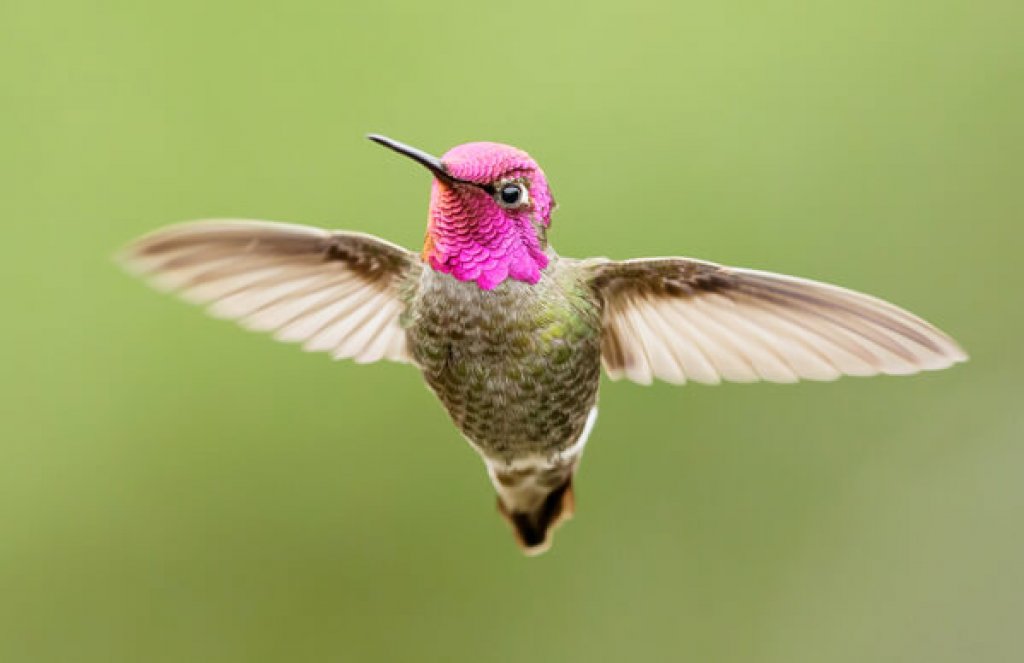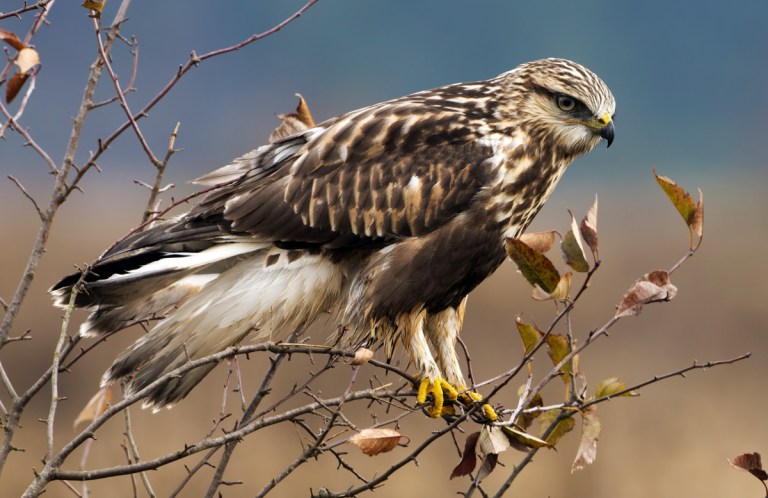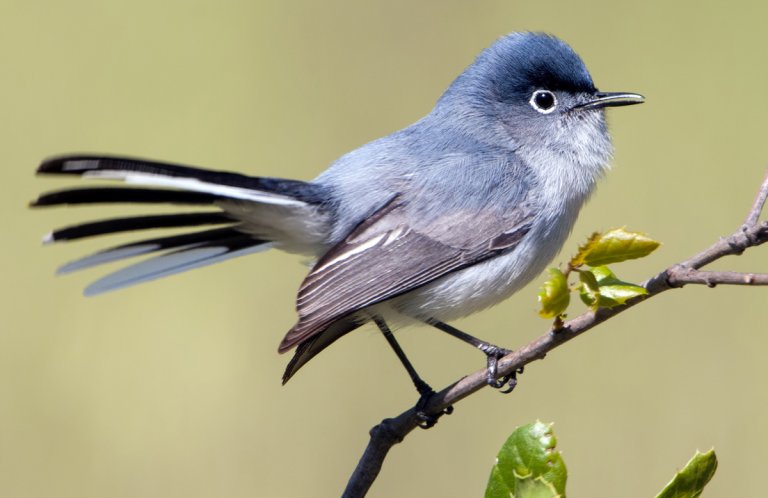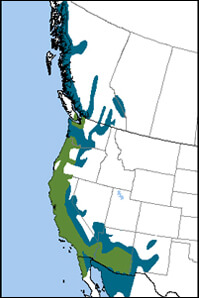 Named for the 19th century Italian duchess Anna Massena, the Anna's Hummingbird is one of only three hummingbird species that are permanent residents of the United States and Canada. (The others are the Allen's and Costa's.) This hardy hummingbird has the northernmost year-round range of any North American hummingbird species.
Named for the 19th century Italian duchess Anna Massena, the Anna's Hummingbird is one of only three hummingbird species that are permanent residents of the United States and Canada. (The others are the Allen's and Costa's.) This hardy hummingbird has the northernmost year-round range of any North American hummingbird species.
The male's flashy magenta gorget extends over its crown, giving it a hooded appearance. Interestingly, the female Anna's also has a small red gorget, where most female hummingbirds have none.
California Birds
Although it can occur from the Alaska coast to northern Mexico, Anna's Hummingbird is found mainly in California during its breeding season, where it is the most common hummingbird species. They don't migrate south and north; instead, these altitudinal migrants move to higher elevations in summer and lower in winter.
Anna's Hummingbirds sometimes hybridize with other species, especially the closely-related Costa's Hummingbird. There are also records of hybridization with Allen's Hummingbird.
Sign up for ABC's eNews to learn how you can help protect birds
Incredible Dive Display
Anna's Hummingbird is an extremely vocal species, especially for a hummingbird. Males sing a buzzy, scratchy-sounding song while perched and during their high-flying courtship spectacles. During the display, the bird ascends up to 130 feet, then swoops toward the ground. At the bottom of its dive, the bird's tail feathers emit a burst of noise. These elaborate dive displays may be direction at other birds and even at people!
Like the Rufous Hummingbird, Anna's is pugnacious and well known for its territorial behavior. Males fiercely defend feeding areas and chase away other male hummingbirds and even large insects such as bumblebees and hawk moths that try to feed there.
Nesting Near Nectar
Female Anna's Hummingbirds sit in the nest while they build the rim up around themselves, working for up to a week to complete the 1-inch tall construction. Spider webs and insect cocoons hold the fibers of cattail, willow, thistle, and small feathers together.
Completed nests are usually located near a source of nectar, 6 to 20 feet off the ground in a tree such as oak or sycamore.
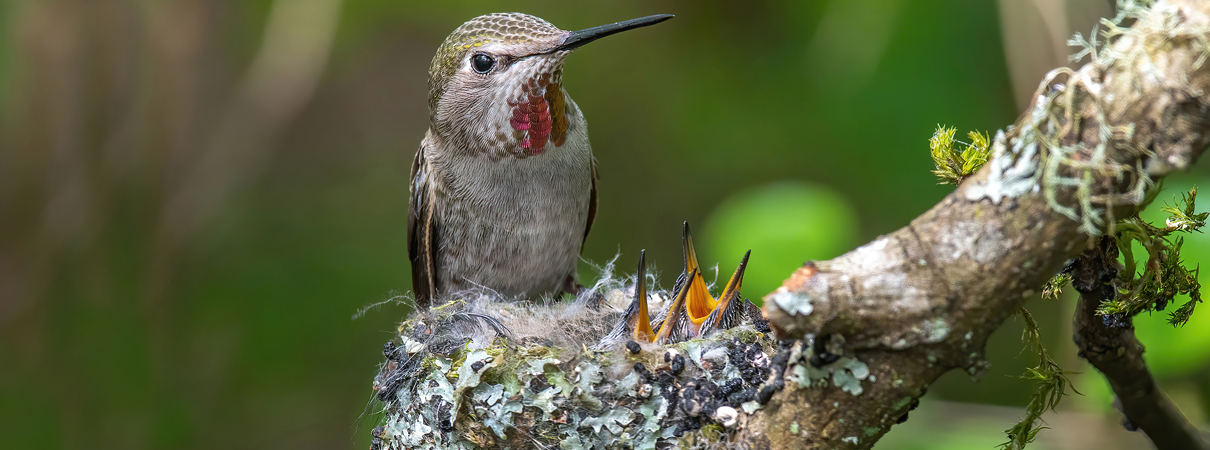
Female Anna's Hummingbird tending to her chicks. Photo by Sen Yang, Shutterstock
Important Pollinator
The flowers and feeders provided by ever-expanding suburban gardens have helped Anna's Hummingbird to expand its range north and east from its original habitat, and the species' numbers have steadily increased since the 1950s. (For the Rufous Hummingbird, the situation is quite the opposite, with the species' population falling roughly 2 percent each year.)
Although Anna's Hummingbird has adapted to non-native vegetation and gardens, wild plants are still crucial to the birds—and the birds are just as important to these native plants. Anna's Hummingbirds are important pollinators of the chaparral flora of coastal California, where plants have evolved winter growth and flowering patterns that match the breeding and feeding patterns of this species. Anna's Hummingbird nests as early as mid-December.
Aside from flower nectar and sap, Anna's Hummingbirds take large quantities of insects, more than any other North American hummingbird. A nesting female can capture up to 2,000 insects a day, mostly small species like midges and leaf hoppers.
Donate to support ABC's conservation mission!





































